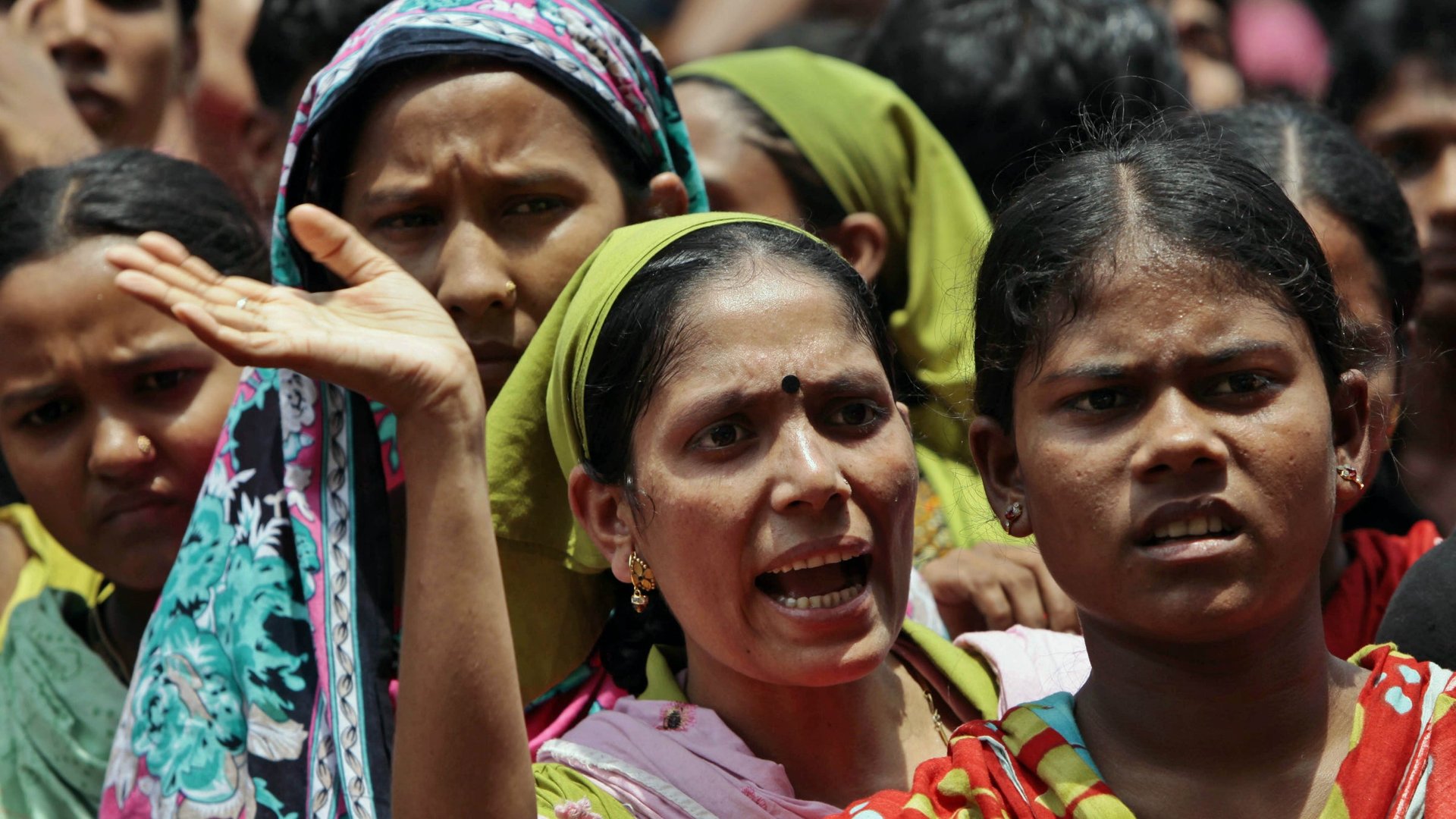Bangladesh’s garment exports increased in May, despite the catastrophic factory collapse a month before
The rhetoric from politicians and clothing brands has not let up since the Rana Plaza factory building collapsed in Bangladesh, killing over 1,100 workers. But neither have exports. Garment shipments were up nearly 12% in May, from the year before, worth a total of $19.3 billion.


The rhetoric from politicians and clothing brands has not let up since the Rana Plaza factory building collapsed in Bangladesh, killing over 1,100 workers. But neither have exports. Garment shipments were up nearly 12% in May, from the year before, worth a total of $19.3 billion.
American and European clothing manufacturers—which account for 23% and 60% of garment imports from Bangladesh respectively—have been trying to minimize any consumer or public relations fallout. H&M, Zara and Abercrombie & Fitch are among those who have signed safety agreements with suppliers. But although the Rana Plaza collapse in April triggered the odd boycott and increased global scrutiny, the impact on Bangladesh’s exports has been minimal.
Critics have also questioned the effectiveness of safety agreements in a country where corruption, poverty and poor regulation are rampant. The Bangladeshi government announced on Monday that seven building inspectors had been suspended from duty pending the outcome of an investigation. A preliminary report suggests that the inspectors had never actually visited the five factories in the Rana Plaza building, one of which had not been licensed since 2008.
But it is not entirely status quo in Bangladesh. Some suppliers have been black-listed by western retailers—and they’re not happy about it. Simco Group is one such supplier, which Reuters reports lost an order from JC Penney for 500,000 pairs of pajamas, and was put on a safety black-list by Wal-Mart for un-authorized sub-contracting. One of Simco’s subsidiaries has threatened to sue Wal-Mart for losses.
If Bangladesh can improve its safety record while maintaining its competitiveness, that’s a good sign. There is scant indication that it has yet managed to do this, although the true impact on garment exports and safety standards will take longer to calculate. If anything, the Rana Plaza disaster has forced retailers to take a closer look at the murky world of suppliers that the retailers previously admitted they don’t know much about, or overlooked to their advantage.